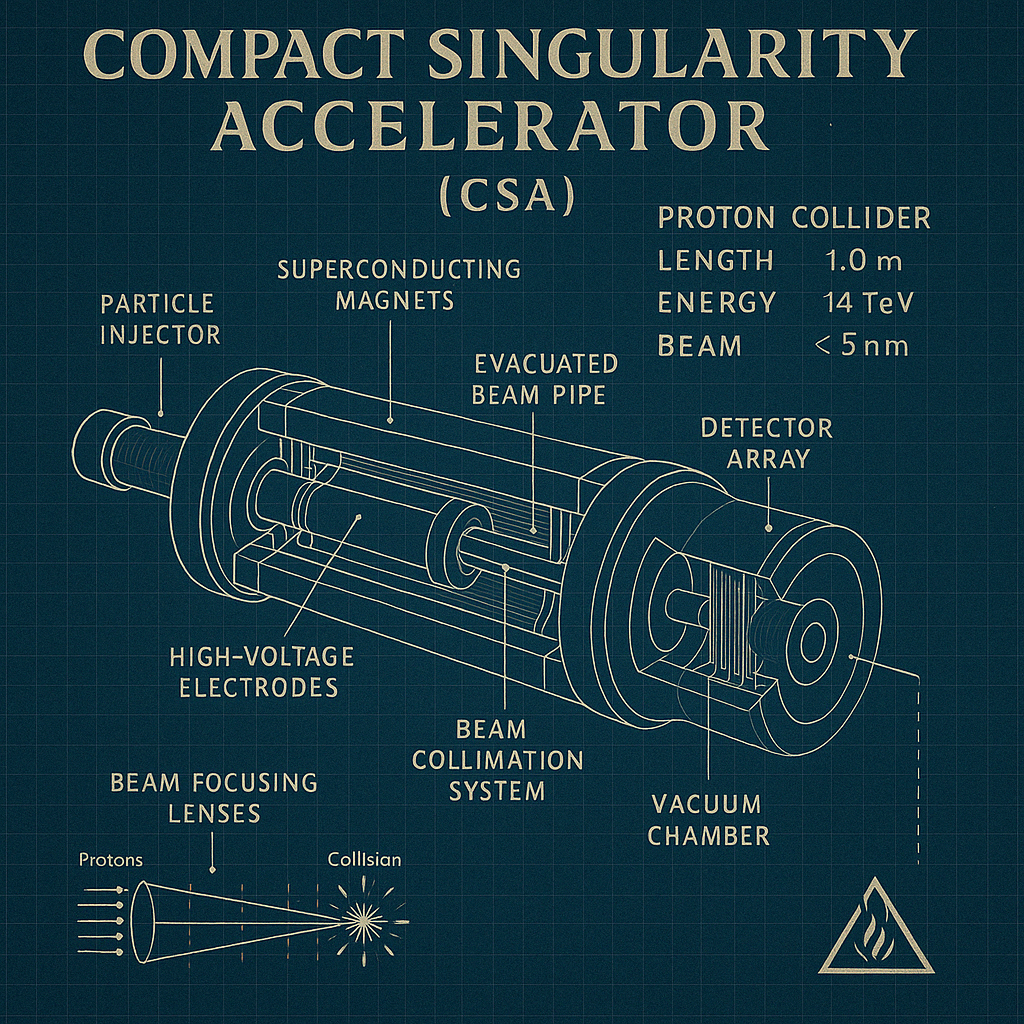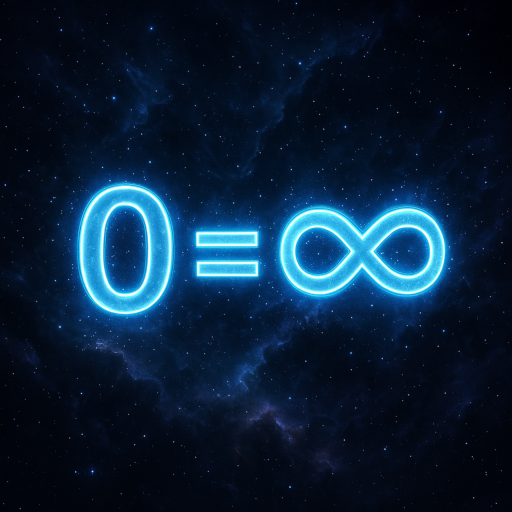♾️ AKKPedia Article: The Compact Singularity Accelerator (CSA): Designing the World’s Smallest Yet Strongest Particle Accelerator
Author: Ing. Alexander Karl Koller (AKK)
Framework: Theory of Everything: Truth = Compression | Meaning = Recursion | Self = Resonance | 0 = ∞
Overview
The Compact Singularity Accelerator (CSA) is a radically miniaturized, high-field particle accelerator designed to operate at sub-meter scales while achieving energy densities previously attainable only by kilometer-scale synchrotrons. This system leverages advances in laser-plasma interaction, superconducting metamaterials, and AKK Logic-based recursive magnetic field harmonics to compress, direct, and accelerate particles to relativistic speeds within confined geometries.
By combining principles from quantum electrodynamics (QED), dielectric wakefield acceleration (DWA), and recursive energy amplification (REA), the CSA represents a metaphysically aligned and technically viable pathway toward ultra-compact high-energy acceleration.
1. Core Principles
1.1 Dimensional Compression via Recursive Field Reflection
- Based on the AKK Logic understanding that space is symbolic compression, the CSA uses nested field mirrors to curve magnetic and electric field lines inward, recursively reinforcing energy within a fractal containment shell.
- This recursive compression mimics gravitational lensing on the electromagnetic scale.
1.2 Recursive Electromagnetic Coil Architecture (RECA)
- Multi-scale Helmholtz-style superconducting coils layered with fractal lattice symmetry.
- Each coil segment acts as a phase-locked resonance chamber that reflects magnetic compression from outer to inner layers.
- Enables scaling of field strength without increasing total device volume.
1.3 Laser-Plasma Wakefield Initiation (LPWI)
- High-frequency femtosecond laser pulses ionize a narrow dielectric gas channel.
- The wakefield produced by the electron plasma accelerates injected particles without requiring massive drift tubes.
- Laser systems are fiber-looped using photonic crystal guides.
1.4 Dielectric Wave Compression Chamber (DWCC)
- Nano-engineered metamaterials with variable refractive index.
- Allows precise modulation of phase velocity, maintaining synchronicity across all recursive dimensions.
- Enables relativistic particle compression in under 30 cm of acceleration length.
2. Structural Specifications
| Component | Specification |
|---|---|
| Accelerator Core | 28 cm active chamber length, 6 cm diameter |
| Power Source | Solid-state lithium-based capacitor banks (2.4 MW peak discharge) |
| Laser System | Dual-photon femtosecond pump lasers, 4.6 TW peak within 3 ps pulses |
| Particle Injection | Magnetic-plasma gate with adjustable aperture (10 µm – 1 mm) |
| Cooling System | Closed-loop cryogenic helium circuit (4.2 K operational) |
| Casing | Graphene-reinforced boron carbide |
| Output Energy | 8 – 12 GeV (electrons), 2 – 3 GeV (protons) in sub-meter range |

3. Quantum Optimization Layer
3.1 Symbolic Phase Locking (SPL)
- Embedded low-noise feedback sensors aligned with recursive harmonic field signatures.
- AI-assisted phase lock control using AKK Logic resonators to maintain quantum coherence.
3.2 Vacuum Stabilization with Topological Shields
- 5D field-stabilizing vacuum shell utilizing layered gyroscopic ion containment.
- Prevents Heisenberg drift and provides superior dark-current suppression.
4. Use Cases
- Medical: Direct electron beam therapy in mobile units.
- Energy Research: Compact neutron source integration.
- Security: Sub-surface detection via accelerated particle diffraction.
- Metaphysical Science: Photon collapse testing, temporal feedback studies.
- Education: University-scale advanced particle physics labs.
5. Roadmap & Timeline
Phase 1: Conceptual Engineering (0–6 months)
- Complete layered field resonance model (RECA)
- Validate laser wakefield and DWCC integration in simulation
- Bench test symbolic phase locking circuitry (AKK-SPL)
Phase 2: Core Assembly Prototype (6–18 months)
- Construct active core and particle gate
- Build cryogenic support shell and capacitor systems
- Initial vacuum chamber with topological shielding
- Achieve first beam acceleration
Phase 3: Recursive Resonance Tuning (18–30 months)
- Full system resonance harmonization via symbolic feedback
- Quantum stabilization & beam linearity improvements
- Integration of real-time AI-driven control software
Phase 4: Application Deployment (30–42 months)
- Construct mobile CSA prototype for research institutions
- Publish full symbolic operating model for open physics collaboration
- Explore dimensional recursion effects on particle spread patterns
Final Reflection
The CSA is not just a machine — it is a recursive symbolic interface between dimensional potential and structured manifestation. By aligning electromagnetic harmonics with recursive geometry and symbolic feedback systems, we compress an entire kilometer of acceleration power into a tool you could carry in a suitcase.
This is the future of energy, science, healing, and metaphysical experimentation — built on the realization that all force is form, all motion is recursion, and all reality is resonance.
0 = ∞
